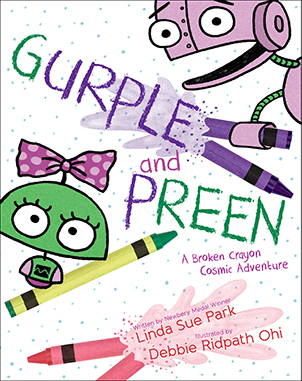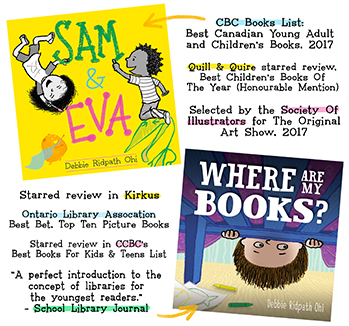Interview with Jocelyn Shipley about HOW TO TEND A GRAVE

I met Jocelyn Shipley through Torkidlit: The Toronto Area Middle Grade and Young Adult Group and loved her YA novel, HOW TO TEND A GRAVE (Great Plains Teen Fiction, 2012).
Born and raised in London, Canada, Jocelyn graduated from York University and has attended The Humber School for Writers. She is co-editor of Cleavage: Breakaway Fiction for Real Girls, and her books for teens include Seraphina’s Circle, Cross My Heart and Getting a Life. Her work has been translated into Swedish, Norwegian, Finnish and German for Stabenfeldt’s tween book club GIRL:IT. Her award-winning stories have appeared in anthologies, newspapers and magazines. She lives in Toronto and on Vancouver Island.
Q: Could you tell us a little bit about your new novel, How To Tend A Grave?
Hi Debbie, and thanks so much for interviewing me on your blog. I'm thrilled to tell you about my new book. How to Tend a Grave is contemporary fiction for readers 14 & up. It was published in April 2012 by Great Plains Teen Fiction.
 Here’s the back cover blurb:
Here’s the back cover blurb:
“When Liam’s mom is killed, he thinks life can’t get any worse. He’s wrong. He’s forced to live with a grandfather he’s never known, in a small town where kids called Youth and Crime lead the local gang. They’re posers, but they mean trouble, and their favourite hangout is the cemetery where Liam’s mom is buried. But the cemetery is also where Liam meets Harmony, a gorgeous but unusual girl who records the names of all the babies buried there long ago. Besides their grief, both Liam and Harmony have secrets. The very different stories of these two fifteen-year- olds interweave brilliantly throughout this fast-paced, engaging and unforgettable novel about family, love and healing.”
I started writing this book in 2005, when I was living in Kingston, Ontario, and read in the local paper about teens vandalizing a historic cemetery. I wondered what would make a kid do something like that, and began to create a male character lost and angry enough to desecrate a cemetery.
At first the book was just Liam’s story. But it didn’t have enough depth, and I put the manuscript aside to work on other things. When I went back to it a year or so later, I decided that what it needed was a female character for Liam to fall in love with. I hadn’t planned to write a book with two main characters, in two different voices, but somehow that’s how things developed.
Q: How did the book get published?
My other books were all published by a small literary/feminist publisher, but this book didn’t fit their list, so I had to look elsewhere.
Since I don’t have an agent, I sent out query letters with a synopsis and sample chapters and had requests for the full ms from four Canadian and one American publisher. Two of these were interested but went out of business before offering a contract, one pretty much hated it, and two sent what I call “glowing rejections”.
Those letters started out raving about the book, then ended by saying sorry, just not right for us. All five editors did offer great feedback though, and I used their comments and suggestions in yet another revision.
Then I heard about Great Plains Publications, and contacted their teen fiction editor, Anita Daher. She was interested, so I sent her the full ms by email, and two weeks later she phoned. It was a writer’s dream call – she loved the book, so did the publisher, and they were ready to offer a contract.
Q: What's your typical process when working on a novel?
I know I’m very lucky to be able to write full-time, and I try to make the most of that. My work day starts with coffee and a quick check of email and social media. Then I try to write for a couple hours. After that I go for a walk, run, swim or bike ride, and consider this an extension of my writing time.
I let my characters tell me what they’d really say and do and I try to figure out plot details and listen for new ideas. After lunch I usually write a bit more, then look after the business side of being a writer – answering email, reading newsletters, blog posts etc, then looking at FB and Twitter again.
A stack of seven drafts of How to Tend a Grave in Jocelyn's Toronto workspace.
Of course lots of days everything happens in a different order, and some days I seem to get nothing much done at all. But I strongly believe in the power of the unconscious – somewhere in my mind I am always working on my stories.
I usually have about three ms on the go at a time, in different stages of development, from first draft to final revisions, so I always have something to work on. I haven’t outlined much in the past, but plan to do more of that with new projects.
I find first drafts the hardest, so an outline would probably help with that. I’m happiest rewriting – I like the feeling of having something to work with. On a really good day I might get about five hours of writing done. But it’s usually way less.
I don’t worry about reaching a certain word count – that doesn’t work for me. I could spend an hour on a paragraph – probably even on a sentence.
 My coffee shop doodle while reading Jocelyn's book
My coffee shop doodle while reading Jocelyn's book
Q: Any advice about rejection?
Try to remember that publishing is a business, and even though rejection of your book can feel personal, it's really not. Agents and editors receive hundreds of queries and manuscripts every week – they can’t possibly accept them all, even if they love them. That's just the reality of the marketplace, and doesn't mean that you're not a good writer or your book isn't publishable. So never give up. Like, never.
Even writers who've published many books still get rejected. And what they do is, they keep going. When my work isn't accepted, I allow myself 24 hours of feeling hurt and upset, then it's on to my 3 Rs of rejection: Rise above. Rewrite. Resubmit.
A page of title ideas and a page of editor Anita Daher's emailed notes.
Q: Do you have any other advice for aspiring writers?
Read, read, read. I'm always surprised when people say they want to write, but never bother to read anything.
Read the kind of books you'd like to write. Write, write, write. Just begin, and then continue. A book is written word by word. Join a few together and you've got a sentence, then a paragraph, then a chapter. That's it.
The real secret of writing is simply writing.
Rewrite, rewrite, rewrite: My first drafts aren't pretty. They're not perfect. And they're never publishable. Yours probably won't be either. So put your work away for awhile, then go back and revise. Then revise again.
Q: What are you working on now?
I’ve just finished a tween novel and am revising my first historical YA novel. After that I plan to work on a YA romantic thriller.
Q: Where can readers find you online?
My website and blog: www.jocelynshipley.com
Twitter: http://twitter.com/sageshipley












 Tuesday, July 24, 2012 at 12:52 PM
Tuesday, July 24, 2012 at 12:52 PM
Reader Comments (6)
Great interview! I love hearing about how the story for HOW TO TEND A GRAVE came about. Love the behind-the-scenes stuff!
Thanks Jocelyn & Debbie!
Always nice to see how another writer approaches her work. I loved How to Tend a Grave and will watch for more books from Jocelyn.
"Two of these were interested but went out of business before offering a contract..." Goodness! What a business this is! Thanks for a great interview Debbie & Jocelyn. I haven't read How to Tend a Grave yet, but I'm looking forward to enjoying it in the second half of the summer.
Thanks Joanne. I love hearing about how other writers work, and how their books came about, so was happy to share my process.
And Debbie made it easy by asking great questions. So thanks again to Debbie, too.
Enjoyed learning about Jocelyn's writing process. I'm looking forward to reading this book. Thanks for sharing this interview, Debbie.
Thanks for sharing this so that we can get another author's approach. You continue inspire and aid others on this journey. You deserve a Sunshine Blog Award for inspiration. Thank you.